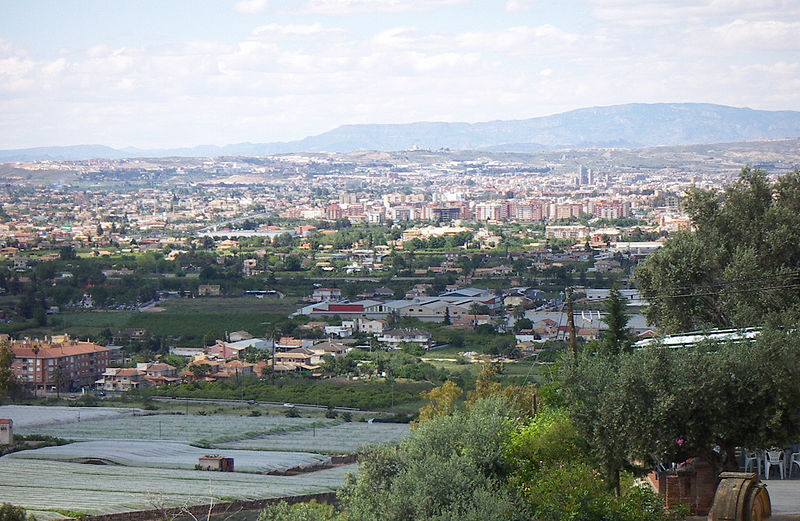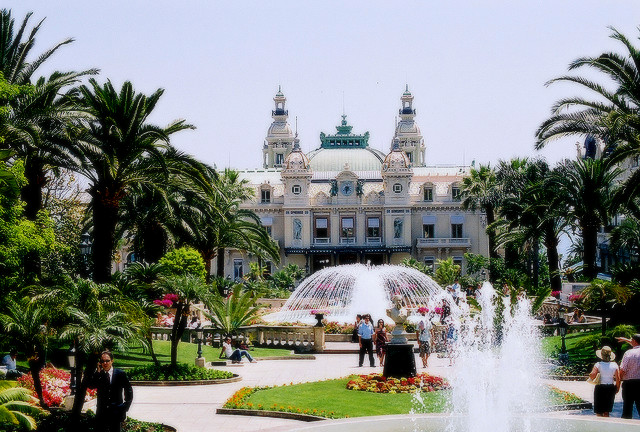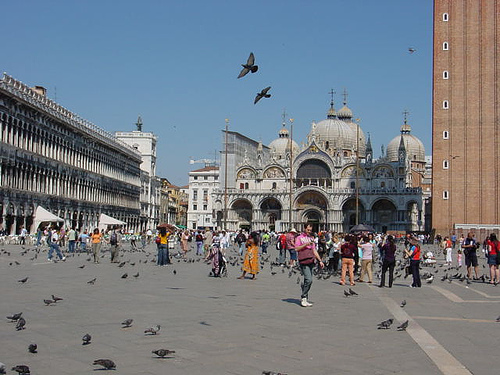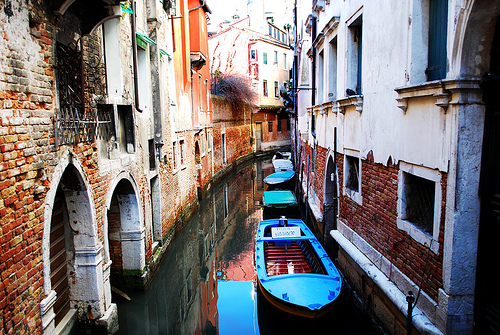Category Archives: Europe Guides
Murcia: arts, culture and beautiful architecture
If you’ve never been to Murcia before, it’s worth checking out this year. Not only is it one of the biggest cities in Spain, with over half a million residents, it’s also brimming over with architectural, artistic and cultural delights. Situated just inland from the south-eastern coast of Spain, it is renowned for its friendly climate with long hot summers, temperate winters and infrequent rain (less than 30 cm throughout the whole year). If you’re looking for hot sun and plenty of it, July and August are typically very hot and dry months while October and November are rather wetter. For those who prefer cooler weather, December through to March is often both mild and dry. Apart from its inviting climate, Murcia is also full of wonderful buildings in the baroque style and visitors can immerse themselves in the history, arts, culture and beautiful architecture of the Murcia region
Beautiful Architecture
The River Segura runs through Murcia and it is spanned by a number of noteworthy bridges ranging from eighteenth century through to the twentieth century. But further away, the real show-stealer is the ancient Roman Aqueduct of Segovia which is a world heritage site. Although it is a rather lengthy eight-hour round trip, it is worth hiring a car in order to experience this piece of ancient architecture which is still in very good condition. Experts have estimated its age to be two-thousand years old and it is a breathtaking monument which you will not want to miss. Back in town, along with the twelfth-century Castle Monteagudo, Murcia Cathedral was built in the twelfth and thirteenth centuries and is famous for its varied architecture. This stunning building includes architectural features ranging from Castilian Gothic through to Spanish Baroque, along with Renaissance, Neoclassical and Rococo accents.
Culture
The area is very well-known for its various festivals and during Holy Week, Murcia hosts a traditional procession which is one of Spain’s best-loved festivals. The local museums house a number of Francisco Salzillo’s enormous sculptures and these are paraded through the streets in a re-enactment of Christ’s route to his crucifixion. As well as the life-sized statues, this stately procession also features hundreds of flowers and candles. A week later, watch out for the Orchard Parade when residents dress in historic rural dress. There is also an international Three Cultures festival in May which showcases the cultural contributions made by the Christian, Jewish and Muslim communities that have lived together for hundreds of years.
Arts
There are also plenty of art-related activities in the area and Murcia turns itself over to music towards the end of July. In San Javier, against the backdrop of the Mar Menor lagoon, there is an annual jazz festival which celebrates music from the artists of yesteryear with tributes to legendary pianists and saxophonists. In the nearby Caragena, there is a global music event, La Mar de Musicas, which features music from a different country each year when internationally-renowned musicians appear. Murcia is also known for its museums and galleries and there have been enormous investments in arts centres in the region. For those interested in more historic art, the Murcia Museum of Fine Arts is worth visiting to see the impressive art collections which date from medieval times. On the other hand, if you have more modern tastes, spend some time in the Sala Verónicas which is a former church, or in the reinvented canning factory, La Conservera, which showcase installations from international artists and sculptors.
Getting there and getting around
Getting to Murcia is relatively easy and there is a choice of international airports, including Murcia Airport and nearby Alicante Airport. The area is well-served by a good range of public transport. For those who wish to explore the area and make the most of the surrounding countryside, mountain and coastal areas, there are also rental cars available from Car Hire Murcia Airport.
So, whether you’re planning an extended visit or a short break, Murcia is guaranteed to provide a unique combination of historic culture and modern entertainment to suit the needs of international visitors.
Natural Bristol!
Bristol is a grand city made famous by its rich history as a port and trading hub. It is widely known that in 1837 Bristol born engineer Isambard Kingdom Brunel launched the famous Great Western steamship that was built in the city’s harbour. But as with many other cities, these famous tales often overshadow things that might otherwise take prominence. For example, as well as being a historic and creative city, Bristol has an array of natural attractions including parks, zoos, aquariums, botanical gardens and more. Check out some of these enjoyable nature activities in Bristol!
University of Bristol Botanical Gardens
The University of Bristol’s botanical gardens were opened in 1882 by Adolf Leipner – the Lecturer of Botany at the time – for a mere £15. Since then the gardens have seen many thousands of visitors every year and continue to thrive. With four impressive plant collections and a further four greenhouses filled with tropical and sub-tropical plants, there is no shortage of interesting things to see. Opening times from April – September are from 10:00am – 4:30pm and it costs £3.50 to get in at the time of writing. School age kids go free.
Avon Valley Adventure and Wildlife Park
Avon Valley is the perfect place to take the kids during the summer holiday, as there are plenty of attractions and events to fill a whole day (perhaps even two). Attractions include a huge indoor soft play arena, pet’s corner, quad bikes and boat rides. One of the park’s great selling points is that it gets the kids out in the fresh air and away from the television. The main park is open from the 23rd March (opening times are 10:00am – 6:00pm, Mon – Sun). It costs £8.00 for an adult and £7.50 for concessions and children. Kids under 2 go free.
Bristol Aquarium
The Bristol Aquarium is home to a wide array of sea life including sharks, rays and a multitude of species that are native to the UK. As if the resident giant octopus wasn’t enough, there is also an underwater tunnel constructed with 2 inch thick glass which houses puffer fish, butterfly fish and wrasse among others. The aquarium opens 7 days a week from 10am – 5pm and a one day adult ticket costs £13.00. Child tickets are £9.00, Senior and Student tickets are £12.00 and family tickets are available for £38.50 (2 adults & 2 children)
If you’re looking for a Bristol hotel, consider staying somewhere quite central, as the city itself is quite big and can be difficult to navigate if you don’t have a car. The Bristol Mercure is very conveniently placed and has the added benefit of a spa to rest your weary body after a day of exploration.
If you haven’t yet, check out our Bristol Travel Guide as well for even more great things to do!
Some of the Top Luxury Casinos in the World!
When trying to decide upon a holiday destination, one literally has the globe from which to make their selection. This can seem a bit overwhelming for some people. However, when trying to narrow one’s options down a bit, thinking about what kinds of things you wish to do while on holiday can be of assistance. For some people, gambling is one activity that can be an alluring activity their final decision, and there are plenty of world class destinations that offer both a bit of gambling and other fun activities, here’s a few of them!
Southern Europe is home to several luxury casinos. On the Iberian Peninsula, one can find the Casino Lisboa. Located in Lisbon, Portugal, the casino is the top one found in the country. With a large gaming floor, the Casino Lisboa offers a variety of casino games to its customers. When it opened in 2006, it provided about 700 slot machines and over 20 gaming tables. Lisbon is also a great destination as it’s one of the last capital cities in western Europe that is still truly affordable. Enjoy the amazing seafood, classic tiled buildings and a view into a Portuguese city that still feels as authentic as it ever has.
Monte Carlo is another destination located in Southern Europe where one can find a luxury casino. Here, the historic casino has been providing gaming for people since 1863. In keeping with its reputation, the casino at Monte Carlo permits only those who are dressed in formal attire. The casino provides opportunities to play a myriad of casino games including various forms of roulette, poker, blackjack, craps, baccarat, slot machines and video poker. If your not familiar with it, craps is a casino dice game that is played at a special table. Many people who have played craps online at places like CasinoOnline.co.nz will find the experience of playing it live in a casino rather exciting. The game can get rather tense especially when someone is placing a large wager down on the table. With this game, two dice a rolled. Players are betting on the outcome of the dice. The game is rather simple to learn and fun to play. Monte Carlo is a gorgeous seaside city with very desirable weather all year round. When your not at the tables, enjoy the stunning landscapes or do a bit of shopping at the high-end retailers located in this compact, attractive city.
These are just a couple locations in Europe to gamble a bit while still having a nice holiday at the same time. Good luck!
Venice Travel Guide
The ‘Floating City’ is one of Europe’s must-visit cities and a trip to Venice can feel like a journey to a different, magical world. The city is made up of 118 little islands and has canals round every corner, making for a truly spectacular sight. Just over 250’000 people live there permanently and you’re perhaps just as likely to meet a tourist in the street as a local. Venice is a fascinating city with architecture, artwork and more and is considered one of the world’s most romantic cities.
What to See and Do
Saint Mark’s Square is the center point of Venice and is always packed full of tourists. The Campanile of the square stretches high into the sky, making it easy to spot from the surrounding areas. The current one was built in 1912 after the previous Campanile collapsed in 1902 and the views from the top of the 50 meter structure are some of the best you’ll find of Venice.
Saint Mark’s Basilica is very much a part of the square with its western walls literally part of it. This great example of Byzantine architecture has over 4,000 square meters of ruby, emerald, diamond and gold covered mosaics and was built both as a tribute to Saint Mark’s body, as well as a way to demonstrate the great wealth and power of 11th century Venice.
The other must-do activity in Venice is to take a trip on a gondola. These traditional Venetian boats cruise along the city’s canals every day and a ride at sunset can be a very romantic way to spend an evening in Venice, especially if you pass under the Bridge of Sighs where legend promises eternal love with a kiss.
Venice Tips and Advice
The first piece of advice for visiting Venice is to find a good map. And then buy a better one! The narrow and winding streets make the city of Venice a real-life labyrinth and you will almost certainly get lost at some point on your trip. The great thing is, however, that an afternoon lost in Venice is better than most afternoons anywhere else! You’ll find little passageways and sights that you’d never have found in the guidebook, making getting lost a lot of fun. Just make sure you have that good map, though, if you do want to ever find your back.
The city of Venice can be quite expensive, but it doesn’t have to be! Don’t go for a meal near Saint Mark’s Square unless you’re happy to be a fortune for your food. Restaurants further from the center re generally cheaper which will make you and your wallet happy. You can also save money on accommodation by looking for a self-catering apartment instead of a hotel. GoWithOh.com is one site with apartments in Venice and worth checking out if you fancy that option.
If you ever find yourself needing the toilet in Venice, know that cafés are obliged to let you use theirs for free. It’s always polite to stay for a drink if you do use their toilet, but a good piece of advice to know if you simply can’t wait!
Hope you’ve enjoyed our quick Venice travel guide, and if you have any other special tips or cool things to see in Venice, please comment below!
Guide Provided by Euan McTear












 Welcome to Home Town Travel Guides.com , your source for travel guides written by locals and those who've been there and done that! ~Jeremy
Welcome to Home Town Travel Guides.com , your source for travel guides written by locals and those who've been there and done that! ~Jeremy